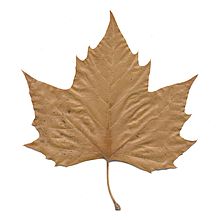Structure, growth, and development
Further information: Plant morphology
Most of the solid material in a plant is taken from the atmosphere. Through a process known as photosynthesis, most plants use the energy in sunlight to convert carbon dioxide from the atmosphere, plus water, into simple sugars. Parasitic plants, on the other hand, use the resources of its host to grow. These sugars are then used as building blocks and form the main structural component of the plant. Chlorophyll, a green-colored, magnesium-containing pigment is essential to this process; it is generally present in plant leaves, and often in other plant parts as well.
Plants usually rely on soil primarily for support and water (in quantitative terms), but also obtain compounds of nitrogen, phosphorus, and other crucial elemental nutrients. Epiphytic and lithophytic plants often depend on rainwater or other sources for nutrients and carnivorous plants supplement their nutrient requirements with insect prey that they capture. For the majority of plants to grow successfully they also require oxygen in the atmosphere and around their roots for respiration. However, some plants grow as submerged aquatics, using oxygen dissolved in the surrounding water, and a few specialized vascular plants, such as mangroves, can grow with their roots in anoxic conditions.
Factors affecting growth
The genotype of a plant affects its growth. For example, selected varieties of wheat grow rapidly, maturing within 110 days, whereas others, in the same environmental conditions, grow more slowly and mature within 155 days.[21]
Growth is also determined by environmental factors, such as temperature, available water, available light, and available nutrients in the soil. Any change in the availability of these external conditions will be reflected in the plants growth.
Biotic factors are also capable of affecting plant growth. Plants compete with other plants for space, water, light and nutrients. Plants can be so crowded that no single individual produces normal growth, causing etiolation and chlorosis. Optimal plant growth can be hampered by grazing animals, suboptimal soil composition, lack of mycorrhizal fungi, and attacks by insects or plant diseases, including those caused by bacteria, fungi, viruses, and nematodes.[21]
Simple plants like algae may have short life spans as individuals, but their populations are commonly seasonal. Other plants may be organized according to their seasonal growth pattern: annual plants live and reproduce within one growing season, biennial plants live for two growing seasons and usually reproduce in second year, and perennial plants live for many growing seasons and continue to reproduce once they are mature. These designations often depend on climate and other environmental factors; plants that are annual in alpine or temperate regions can be biennial or perennial in warmer climates. Among the vascular plants, perennials include both evergreens that keep their leaves the entire year, and deciduous plants which lose their leaves for some part of it. In temperate and boreal climates, they generally lose their leaves during the winter; many tropical plants lose their leaves during the dry season.
The growth rate of plants is extremely variable. Some mosses grow less than 0.001 millimeters per hour (mm/h), while most trees grow 0.025-0.250 mm/h. Some climbing species, such as kudzu, which do not need to produce thick supportive tissue, may grow up to 12.5 mm/h.
Plants protect themselves from frost and dehydration stress with antifreeze proteins, heat-shock proteins and sugars (sucrose is common). LEA (Late Embryogenesis Abundant) protein expression is induced by stresses and protects other proteins from aggregation as a result of desiccation and freezing.[22]
Plant cell
Main article: Plant cell
Plant cells are typically distinguished by their large water-filled central vacuole, chloroplasts, and rigid cell walls that are made up of cellulose, hemicellulose, and pectin. Cell division is also characterized by the development of a phragmoplast for the construction of a cell plate in the late stages of cytokinesis. Just as in animals, plant cells differentiate and develop into multiple cell types. Totipotent meristematic cells can differentiate into vascular, storage, protective (e.g. epidermal layer), or reproductive tissues, with more primitive plants lacking some tissue types.[23]
Physiology
Main article: Plant physiology
Photosynthesis
Main articles: Photosynthesis and Biological pigment
Plants are photosynthetic, which means that they manufacture their own food molecules using energy obtained from light. The primary mechanism plants have for capturing light energy is the pigment chlorophyll. All green plants contain two forms of chlorophyll, chlorophyll a and chlorophyll b. The latter of these pigments is not found in red or brown algae.
Immune system
By means of cells that behave like nerves, plants receive and distribute within their systems information about incident light intensity and quality. Incident light which stimulates a chemical reaction in one leaf, will cause a chain reaction of signals to the entire plant via a type of cell termed a "bundle sheath cell". Researchers from the Warsaw University of Life Sciences in Poland, found that plants have a specific memory for varying light conditions which prepares their immune systems against seasonal pathogens.[24]
Internal distribution
Main article: Vascular tissue
Vascular plants differ from other plants in that they transport nutrients between different parts through specialized structures, called xylem and phloem. They also have roots for taking up water and minerals. The xylem moves water and minerals from the root to the rest of the plant, and the phloem provides the roots with sugars and other nutrient produced by the leaves.[23]




No comments:
Post a Comment